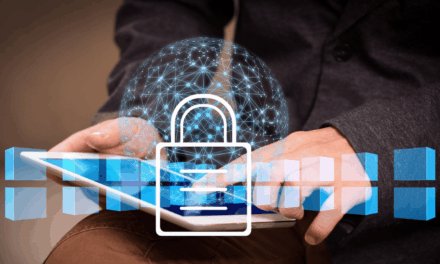Based on some major cyber incidents of the last 11 months, what cyber hygiene habits should we inculcate for 2025?
As we near the end of 2024, it will be useful to review the string of cybersecurity scares that have marked the eventful year.
From the global CrowdStrike-driven outage to the Internet Archive breach affecting 31m users, to the Microsoft Azure OpenAI cyberattack, it is clear that cybercriminals are outpacing how the rest of the world is using technology.
Here is a roundup of some of this year’s key cyber threats and trends provided by Check Point and tips to bear in mind for the year ahead.
- AI-powered attacks
AI-driven malware can learn and adapt, identifying system weaknesses and avoiding detection. With machine learning, hackers can tailor attacks — such as spear-phishing emails that mimic trusted contacts — or using deepfake technology to impersonate voices or images to render them far harder to defend against. Unlike the predictable malware of the past, these attacks can “think” their way around security measures, creating a highly dynamic and evolving threat landscape. - Amplification attacks
The Internet of Things (IoT) is integral to our daily lives, from smart thermostats to home security cameras, but these connected devices can also be a hacker’s gateway to exploit vulnerable systems. In 2024, IoT vulnerabilities have fueled amplification attacks, where hackers can gain unauthorized access to thousands of devices — turning everyday technology into a weapon. Devices such as cameras, routers, and smart appliances have been found to have exploitable flaws, allowing attackers to hijack them for surveillance or to gain entry into larger networks. As more IoT devices become ubiquitous, they are turning from convenience into a significant cybersecurity risk. - Social media exploitation
Just as mirrors in folklore offer glimpses into hidden worlds, social media profiles serve as windows into our personal lives. Cybercriminals are increasingly scraping personal information from social media to craft detailed “digital dossiers” on individuals, which they can use for a variety of malicious purposes. This data often reveals intimate details, making it easy for attackers to launch targeted phishing campaigns, impersonate individuals, or even blackmail them. As we continue to share more about ourselves online, it will be crucial to recognize how much personal data is available for exploitation — and the risks posed if it falls into the wrong hands. - Voice fraud and “Fake Calls”
Fraudulent phone calls are nothing new, but in 2024, they have taken on a more sinister form with the rise of voice-based scams. Using advanced Android malware, cybercriminals are now able to simulate trusted voices — such as those from your bank or a tech support agent —making it difficult to tell the difference between real calls and fakes. These fake calls rely on established social trust, with attackers gaining access to sensitive personal information through sheer manipulation. This form of scam can lead to identity theft, financial loss, or even data breaches, making it essential for consumers to double-check any unsolicited communication before responding - Location data and dating apps
As more people turn to online dating, many are unaware of the privacy risks associated with sharing personal location information. Dating apps can inadvertently expose users’ real-time whereabouts, creating significant security concerns. For instance, location tracking features, intended to enhance user experience and match individuals based on proximity, can also make users vulnerable to stalking or cyberstalking. While dating apps aim to foster connections, they can inadvertently open doors for dangerous encounters, both online and offline. It is crucial for users to adjust privacy settings and be mindful of how much personal information they share, especially early in a connection. - Fake warning videos
Anything we receive that purportedly warns of some email scam or cyber threat has got to be sincere and needs to be forwarded to all and sundry, right? Wrong! Cybercriminals and scammers are now so devious that they are sending out “helpful” step-by-step videos illustrating some supposed scams, and warning viewers not to be fooled. For example, one devious video warns people about spoofed Google Alert emails and about getting their entire device wiped clean if they click on just one embedded link. In actuality, the video content and warnings are an exaggeration, are not properly justified by the explanatory text, and in actual fact, sneak-in subliminal visual messages to engineer social biases and other psychological habits! Remember: not all “helpful” warning videos are based on truth, and should not be forwarded blindly to help social engineering cybercriminals achieve their heinous objectives!
Tips for weathering cyber threats
Here are some practical tips to help you protect yourself from the “tricks” lurking in the digital domain:
- Verify caller identities: If you receive unsolicited calls from your bank or other trusted institutions, make sure to verify their legitimacy before sharing personal information.
- Secure your IoT devices: Change default passwords on all IoT devices, update their firmware regularly, and restrict access to trusted users only. This minimizes the risk of them being hijacked.
- Review social media privacy settings: Take the time to adjust privacy settings to control who can access your data. Limit the amount of personal information available publicly, especially location data.
- Stay informed of cybersecurity trends: With new cyber threats emerging all the time, staying educated on the latest attack methods is one of your best defenses.
- Evaluate necessity of network connectivity: Consider whether every device in your home or office really needs to be connected to the internet. Unnecessary connections only create more vulnerabilities.
- Update security regularly: Keep all your devices updated, especially IoT devices, which are often overlooked in patching routines.
By being proactive and taking control of digital security, we can detect, deter, prevent and quell cyber threats in our personal social and work circles. Remember, we will not be totally safe until others around us are helped to stay safe.

















